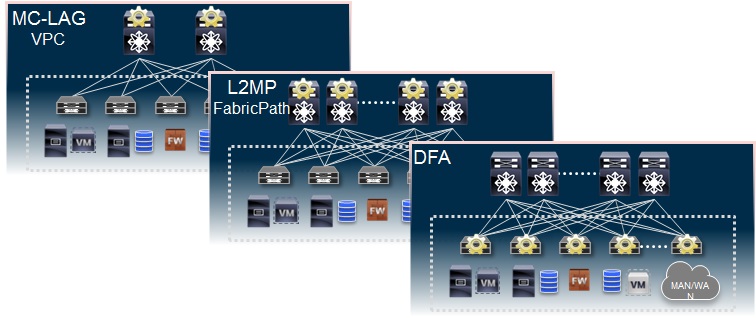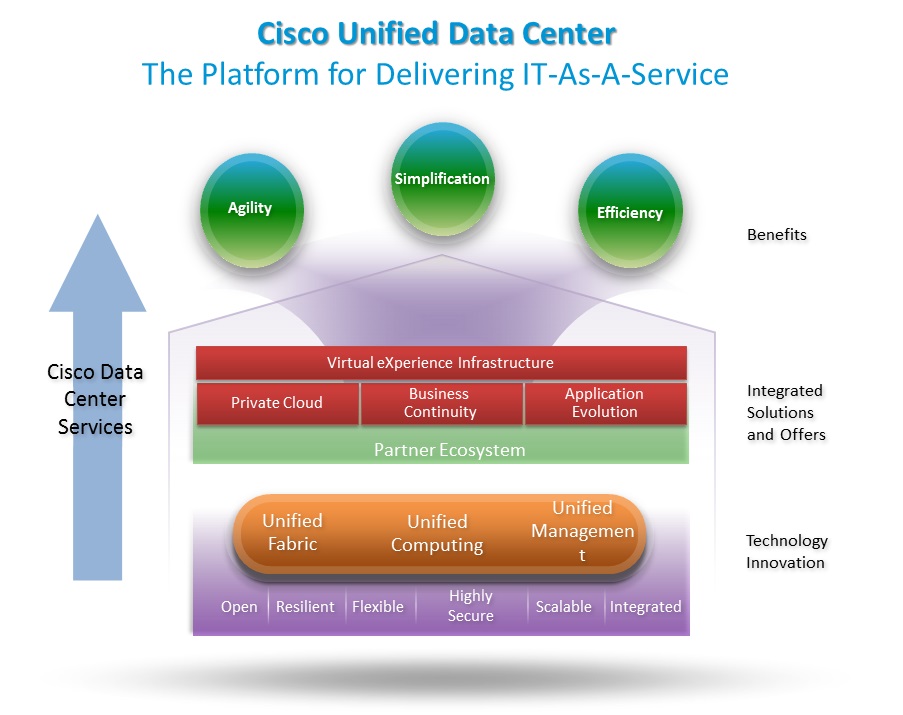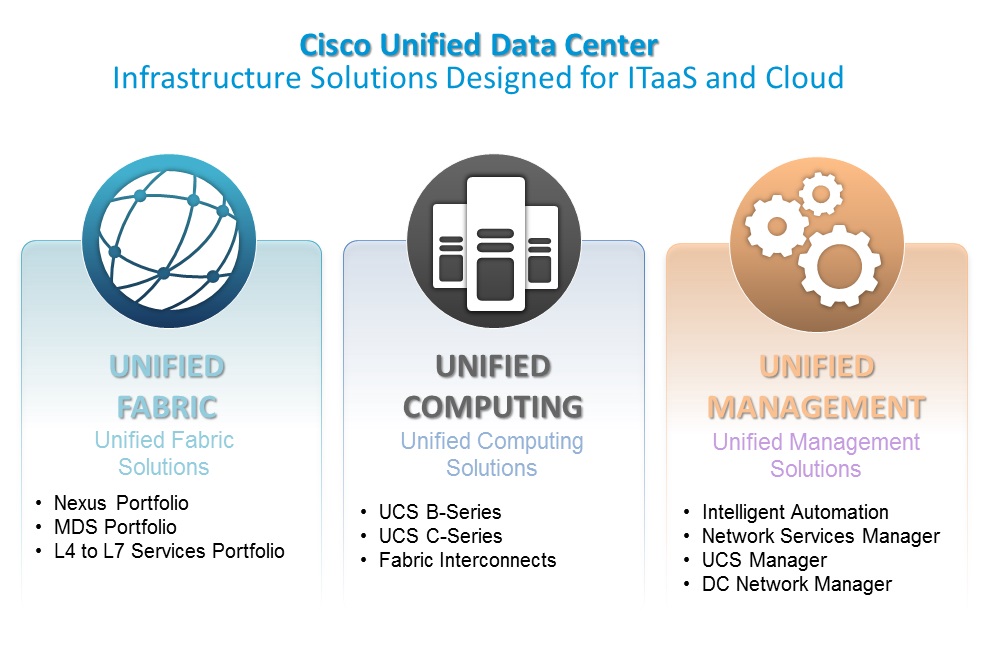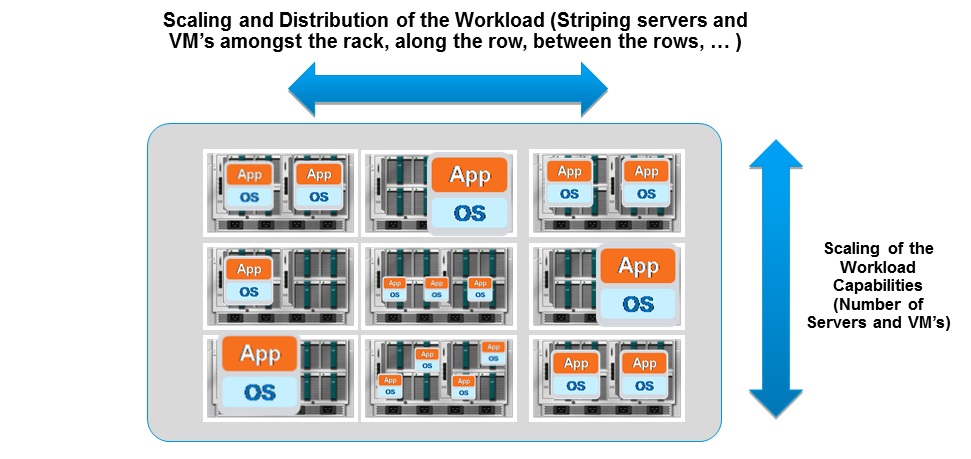- Cisco Community
- Technology and Support
- Data Center and Cloud
- Data Center and Cloud Knowledge Base
- Business Driven Approach - Modern Data Center Solutions with Cisco Unified Data Center
- Subscribe to RSS Feed
- Mark as New
- Mark as Read
- Bookmark
- Subscribe
- Printer Friendly Page
- Report Inappropriate Content
- Subscribe to RSS Feed
- Mark as New
- Mark as Read
- Bookmark
- Subscribe
- Printer Friendly Page
- Report Inappropriate Content
07-11-2014 08:54 AM - edited 03-01-2019 06:01 AM
Overview
The modern business requirements and market trends are increasingly adding new demands on data centers that were designed for a different era and a different set of requirements. Therefore, since few years a significant and rapid changes have been occurring to the networks architectures in general and Data centers in particular where many new concepts, methodologies and architectures have been introduced to address the high demand and changes of the new business needs and its applications requirements such as mobility, BigData and Cloud services. As a result, currently there are several data center products and solutions that can be used to achieve different goals and in some situations these products and architectures can overlap to achieve the same result. Consequently understanding the business goals and its vision and use it as a main driver to select the desired solution becomes very critical not only to meet the current business requirements but also to deliver business value with a future vision.
This Article will not discuss specific requirements and what is best technical suitable architecture for it, however it will cover the high level approach that need to be considered in order to produce the best fit for the design requirements that can deliver a value to the business using Cisco Unified Data center solutions. In other words instead of considering certain product or using a specific architecture then try to find how it can deliver value to the business the selection will be purely business driven where IT become a strategic business enabler.
IT Challenges
Every organization or enterprise has business goals and to achieve these goals there must be different strategies set by the enterprise to facilitate achieving these goals. IT strategies considered a main facilitator to modern businesses these days and it must be aligned with the business needs and goals to deliver the desired value and become the enabler to the business goals.
It’s commonly known that the data center network sits at the core of the IT and therefore it is key to know how IT can deliver services and value back to the business, however the new business demands and technology trends are changing the role of IT and introducing new challenges to application availability while yesterday’s data centers were not designed to address. Based on Cisco’s studies, below are some of the new trends and considerations of modern business requirements:
- Mobile devices and applications abound. The Internet of Things (IoT) will triple the number of devices generating traffic on IP networks. Mobile devices are now ubiquitous, and they will download 77 billion apps in 2014.
- IP traffic is increasing dramatically. Global data center traffic will quadruple over the next five years, and global cloud IP traffic will increase six fold.
- Traffic flows are becoming unpredictable. The traditional data center was designed primarily for north south traffic flows, but today, 76 percent of traffic is east west, within the data center.
- Businesses increasingly rely on distributed database and enterprise applications. Fully 80 percent of enterprise applications are delivered as a service today.
- Server workloads are changing. Nearly two thirds of workloads will be processed in the cloud by 2016
Taking into considerations the above market and business trends, it is obvious that Mobile and virtualized workloads, cloud applications, big data, dynamic policy, heterogeneous devices: these are the features of the modern IT environment. In this new environment, bandwidth needs are far more demanding and traffic patterns far less predictable than they used to be and as mentioned earlier many of the existing data center networks were designed primarily toward relatively static and predictable traffic flows, mostly on premises IT consumption, and a much narrower set of devices and applications
The question to be asked now, is your current DC network capable to transform to meet these new demands? What approaches should you start consider to?
Identify the Requirements
This phase is the most critical one however I noticed many designers at this stage mainly and sometimes only focus on the technical requirements such as routing protocols, layer 2 switching technologies, more features..etc while they overlook the goals and trends from the business point of view, a good design must be driven from the business requirements and aligned with the IT strategies to enable and facilitate the selected solution to:
- Deliver the scale and performance necessary to support the enterprise applications and virtual and cloud workloads of next generation data centers
- Simplify services provisioning and operations in any network architecture
- Provide an intelligent data center network foundation that adapts to the needs of your applications, instead of the other way around taking into consideration business continuity polices
Later on the business requirements can be mapped to functional requirements and constrains
For example:
“An enterprise need to upgrade its DC to support the ability of separating its business units applications and traffic flows within the data center and minimize TCO, Opex and response to applications changes “ This is a business need that is based on business structure and internal governance decisions. An IT strategy is required to enable and facilitate this requirement
By mapping this requirement into a functional requirements it is clear that a multi-tenant solution can be used, but at the same time there are other considerations here from the business point of view to be met which can be considered as constrains to the design, are lower cost and speed-up the response time to any application change ( e.g. provisioning of new services ). Based on that, an architect can make a decision and need to ensure that the decision is capable of supporting the functional requirements and taking into considerations the given constrains
As a result of this interdependency, this type of requirement cannot be met by a product or a set of features, however it needs a unified end to end solution that uses a holistic approach that can transforms the DC architecture to IT as a Service (ITaaS) model
How Cisco Unified Data Center Solutions enable IT to transform from cost center to a strategic business enabler
As discussed above yesterday’s data center was never designed for today’s virtualized workloads, unpredictable traffic patterns, and the increasing capacity demands. As a result the existing traditional Data Centers are becoming a limitation to the new business requirements and market trends because the used architectures are very silo-based and not designed to integrate into an automated, on demand model.
Cisco believes “it is important to take an approach that doesn’t look at technologies, processes, and people in isolation”
The Cisco’s holistic Unified Data Center approach that is founded on a unified fabric-based design that has been developed, from the ground up, to integrate technology silos, reduce costs, and improve productivity that can address the challenges of today’s Data Centers.
The concept of "fabrics" has emerged over the past few years as a means to converge separate storage, networking and server technology in the data center. The Cisco Unified Data center vision encompasses the entire data center, from compute, to networking, to management in any environment to suit the different business needs and offer flexibility to provide resources within the fabric to workloads as needed.

Cisco delivers and accomplishes this through a reliable, consistent, and simple architecture in conjunction with built-in policy, network features, management, and programmability. All of these aspects together enable IT to change from cost center to a strategic business enabler, becoming IT as a Service.

Cisco’s Unified Data Center is composed of infrastructure solutions designed for ITaaS and Cloud and are grouped into three main categories; each offers a selection of products to fit various data center needs.

Unified Fabric Solutions
The Cisco Unified Fabric Switching portfolio offers one of the broadest data center LAN and SAN switching portfolios in the industry spanning from the Hypervisor to the data center core.
Cisco Unified Fabric provides flexible network solutions deliver network services to servers, storage, and applications, providing transparent convergence, scalability, and sophisticated intelligence.
Solutions include: Cisco multilayer data center switches, Cisco Nexus® switches, Cisco Catalyst® switches, Cisco NX-OS Software, vPC and FabricPath, I/O consolidation
Unified Computing Solutions
Cisco’s next-generation data center system unites computing, network, storage access, and virtualization into a cohesive system designed to reduce total cost of ownership (TCO) and increase business agility. The Cisco Unified Computing System™ (Cisco UCS) is built with:
Blade servers, Rack-mount servers, Fabric interconnects , Virtual interface cards

Unified Management Solutions
Management solutions simplify and automate the deployment of IT infrastructure and operate across physical and virtual resources.
- Unified computing management: Single management interface for hardware and software components and configurations e.g. Cisco UCS™ Manager
- Automation and orchestration: Allows policy-based, on-demand provisioning; quickly develop self-service portal and IT service catalog e.g. Cisco Intelligent Automation for Cloud
- Data center network management: Optimize the overall uptime and reliability of your network to improve business continuity e.g. Cisco Data Center Network Manager
In conclusion we realize that organizations have greater demands than they ever have before with new types of business and applications requirements where traditional data center products and architectures cannot support. In order to provide a suitable solution for next generation applications and business needs such as mobility and virtualization a good understanding of the organization’s business model, goals and strategy is required to provide an integrated end to end solution driven by the enterprise business needs that look at the Data center from a holistic approach.
Cisco Unified Data Center is the most cost-effective data center solution that is built from the ground up for physical, virtual, and cloud implementations and it’s capable to deliver a unified architecture across compute, network, storage and management with every element integrating with the others.
Regards,
Marwan Alshawi
CCDE #2013::66
EMCCAe
Find answers to your questions by entering keywords or phrases in the Search bar above. New here? Use these resources to familiarize yourself with the community:
